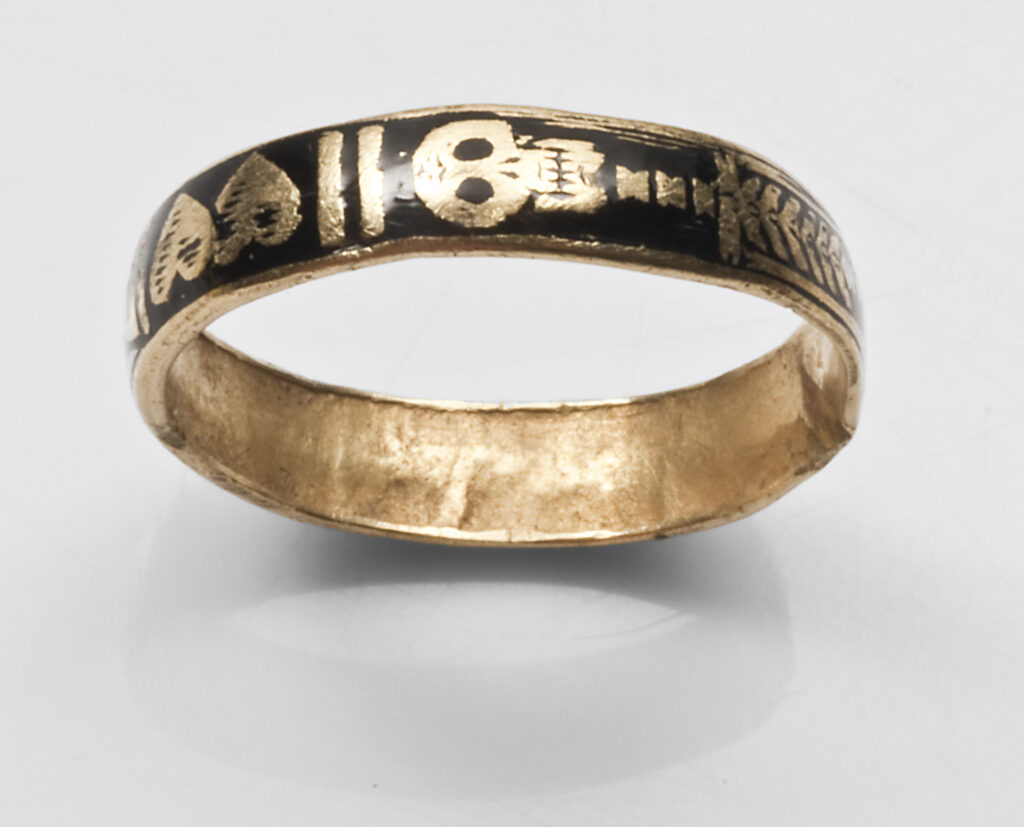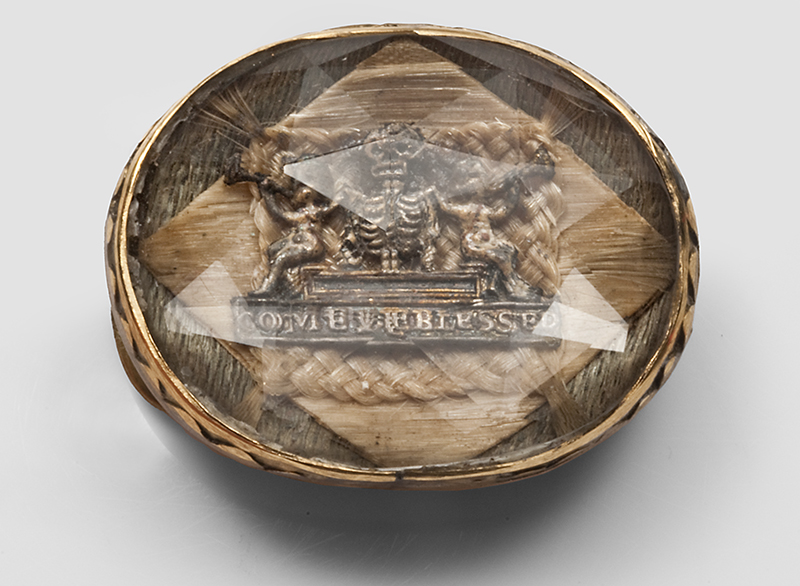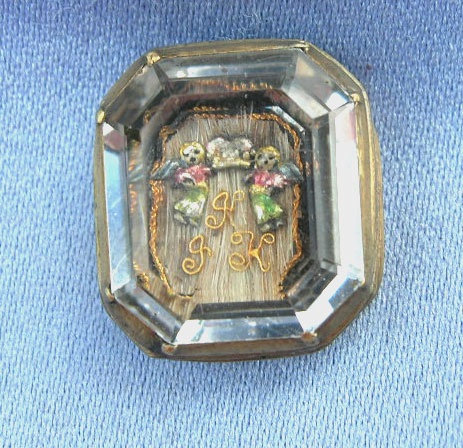Memento Mori in a Ribbon Slide, Scythe, Hourglass and Skeleton Within!
The late 1600s were not only the time of the English Restoration, but the establishment of many industries that still exist today. One of the most important of these industries in relation to this website is the industry of mourning, which monetised grief and appropriated prior symbolism which belonged to Memento Mori and the burgeoning Enlightenment movement.
This slide shows the effectiveness of the use of this symbolism. Considering that ribbon slides were worn at the hair or wrist, here is a depiction of mortality in its most physical shape. The skeleton, death, holding the hourglass (tempus fugit) and the scythe is the very symbolism of human remains and approaching mortality. What would have been once a statement that judgement awaits was now a display of grief. It’s important to note that it’s not a singular symbol, but a combination of the tree; time flies, the mowing reaper with a scythe ready to cut life short and the representation of the human remains themselves. Much of the need for this mourning industry was born from the royal court and the necessity of mourning.
During the 18th century, social barriers began to decline with the entrance of new wealth and withdrawing of restrictions by the Court of Heralds. Mourning costume played a significant part in this new social mobility.
As the adjudicators of custom, the Courts of Heralds persecuted those who transgressed the lines of aristocratic mourning regulations and issued fines accordingly. At this time, the rising merchant class were trying to compete with the nobility in society, which equated to proving their status by following Court regulations in the closest manner.
The requirements of mourning put a tremendous strain on the household and this would only increase as years passed. In costume, reflective surfaces were not permitted, with a heavy reliance on dull and matte fabrics. Broadcloth, crape and paramatta were mandatory. The stages of mourning were also coming to prominence. First mourning, or full mourning required no jewellery or shiny surfaces. Only dull silk, crape and broadcloth were permitted. Second mourning dress was less severe and those that followed it carefully could change accessories to reflect the change. Half mourning stage required dull mauve, black and grey. Passive patterns and silk fabrics were allowed. Deep red survived as a mourning colour, but not among the fashionable. With regulations like these in mind, the household was expected to provide gowns, cloaks, scarves, headbands and gloves for the chief mourners and provide for the family servants afterwards. The less affluent couldn’t afford this necessity of the stages of mourning coupled with the funeral reliance, but it was demeaning to skimp. Due to this, servants’ dress was cheaper in price and quality. By the end of the century, Court Heralds lessened restrictions of mourning to upper classes, leading the middle classes to wear mourning costume as a symbol of social status. Court mourning was worn by those with direct Court connections, but General mourning was open to those who could afford it. This grew so much that by the 19th century, General mourning was worn by the working classes. Court etiquette remained largely constant across Europe.
Men’s fashion over this century followed on from Elizabethan times, as mourning cloaks and hats still remained popular. It wasn’t until the 1670s that new fashions were introduced; wearing buttoned coats which reached to the mid-thigh, with wide hats and long hair or wigs entering fashion. Full mourning cloak was worn by chief mourners, with the train carried by train-bearers. Mourning gowns had previously been in fashion, but scarves with cloaks replaced this. Conventional mourners wore scarves over their black coats. Scarves were black for a male funeral and white for a woman or child. Male costume was becoming fashionable, as mourning gowns with hoods and lirpipes slowly became unfashionable and were quite unfashionable by the turn of the 17th century.
Accessories were quite prolific for men, ranging from ‘black ‘cloth’ shoes, dull black gloves black waistcoat and coat buttons, black stockings and black sword covers and belts. Mourning swords were even available.*’ Cavalier hats replaced those of the wavy brimmed variety of the Elizabethan era and the high turned crowned hats subsequently replaced these in the Restoration period. Along with these, ‘weepers’ were introduced, which was a hatband made from black or white silk, wound around the crown and the ends falling down the wearer’s back. In memorial fashion, these would stay consistent for over two hundred and fifty years.








